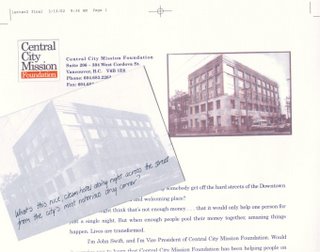Story vs. Statistics
Which opening paragraph would you choose:
“As you read the enclosed letter from someone whose mother recently passed away here, I want you to try for a moment to think of the unthinkable: What if it was somebody you know and love in one of our beds?…”
“I was walking down the hallway in our Palliative Care Unit when I heard bright laughter coming from one of our patients as she joked with her grandchildren.
“I stopped to listen for a moment, not because laughter is such a rare sound around here, but because it was such a powerful reminder of what we do for our palliative care patients at Lions Gate Hospital.
“Their laughter told me that we have created a safe and caring place for terminally ill people and their loved ones to share their feeling during their precious final days together….”
The first opening has specifics, a motherhood issue and a campaign target…. But it’s like the beginning to nearly every other fund raising letter you read. Ironically, it’s lifeless.
The second opening has something irresistible -- story.
People love stories. And in my years in direct marketing, I’ve never found anything that could out-pull a good story. So whenever I can, I try to weave stories into my writing – whether it’s a fund raising campaign, an offer of financial services, or a lead generation piece for a high tech marketer.
(see the next blog entry for the full letter...)


